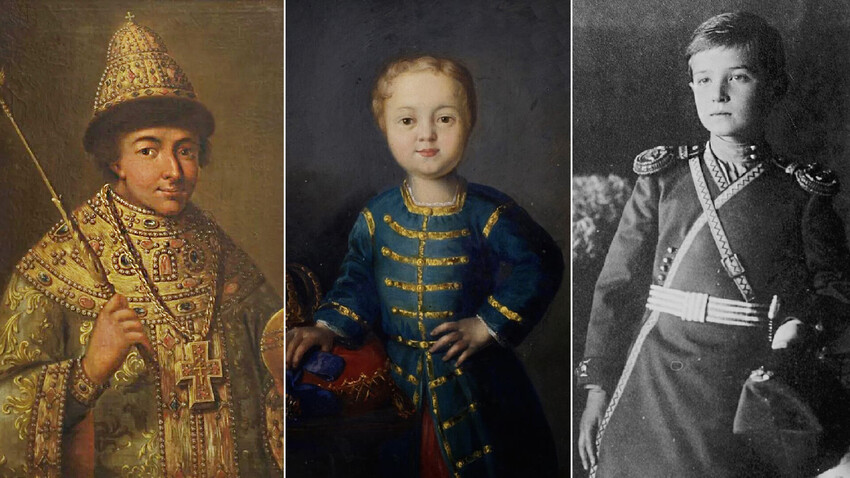
Fyodor, Ivan, Alexey – the misfortunate heirs to the Russian throne...
Public Domain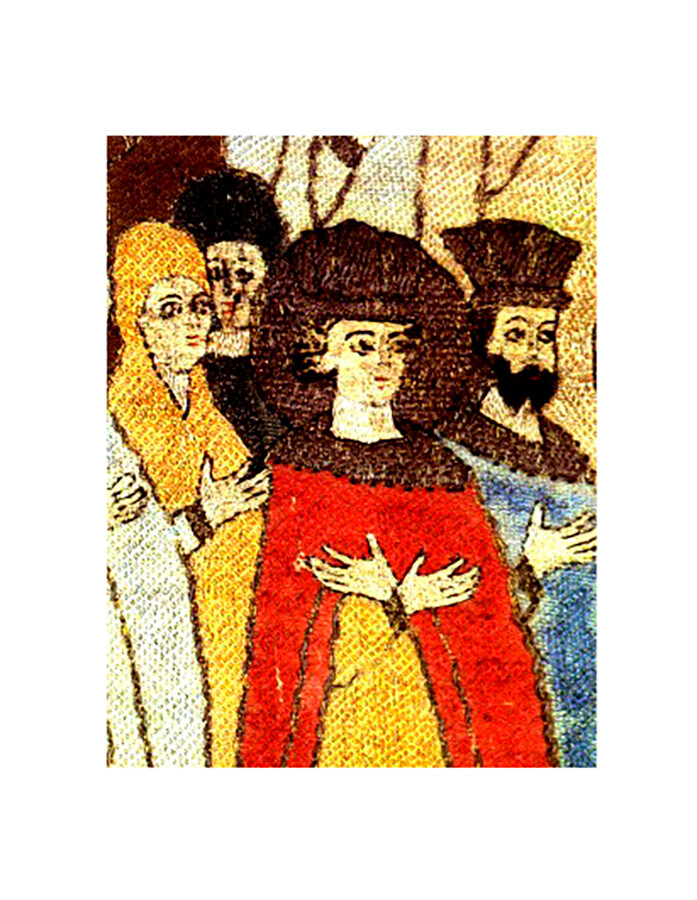
Dmitry the Grandson as depicted on an Orthodox emroidery made by his mother Elena.
Public DomainDuring his life, Dmitry was an heir to Moscow’s throne, but died in prison. Dmitry Ivanovich was born in 1483. He was a son of Ivan the Young, a crown prince of Moscow and grandson to Ivan III, the Grand Prince of Moscow and the founder of the Moscow state. In Russian history, he is known as ‘Dmitry Vnuk’, literally ‘Dmitry the Grandson’.
In 1490, Ivan the Young, who was then the heir of the Moscow throne, suddenly became ill. A foreign doctor invited from Venice promised with his life to heal the heir, but failed and was executed by Ivan III, with Ivan the Young eventually dying. Eight years later, in 1498, Dmitry Ivanovich was established as the heir presumptive by his grandfather Ivan III.
However, Ivan III had other children from his second marriage to Zoe (Sophia) Palaiologina. Their eldest son Vasiliy Ivanovich was uncle to the heir, Dmitry Ivanovich, and four years his senior. In 1502, Vasiliy managed to become his father’s co-ruler, he was crowned as the Grand Prince of Moscow and Vladimir [another major Russian city at the time] and All Russia.
When Ivan III died in 1505, Vasiliy effectively became the sovereign and put the ill-fated Dmitry Ivanovich in prison, where he died in 1509, at just 25 years of age. We do not know anything about his life and the only picture of Dmitry Ivanovich is on an embroidery supposedly made by his mother.
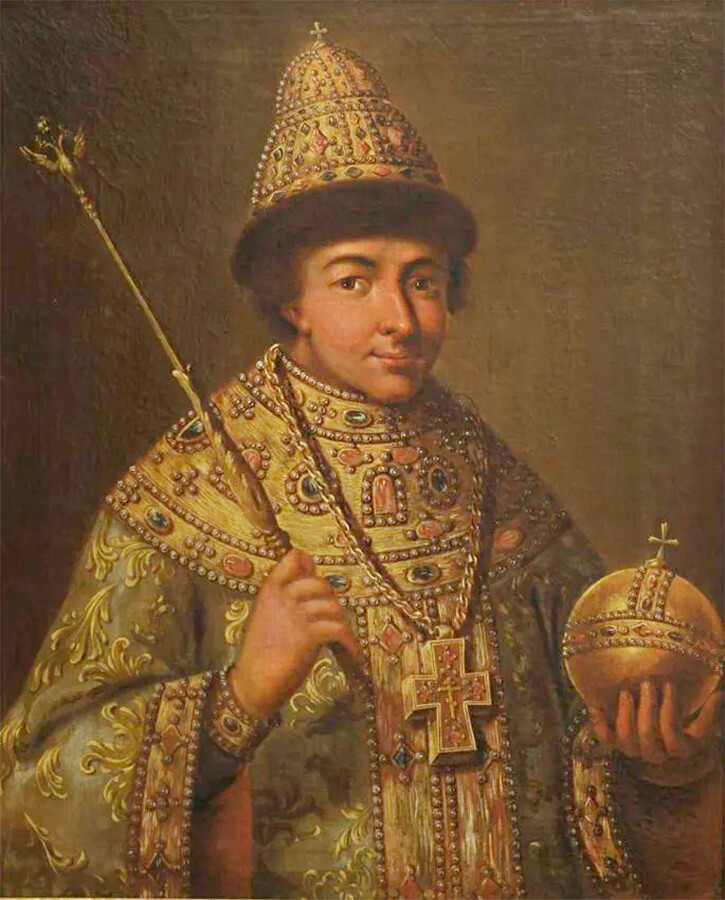
Fedor Godunov
Public DomainFyodor was the son of Boris Godunov. Boris was the brother of Tsarina Irina, wife of Tsar Fyodor Ioannovich, son of Ivan the Terrible. Tsar Fyodor wasn’t much involved in the politics and the ruling process, while Boris Godunov was, in fact, regent of the state. So, after Fyodor Ioannovich died in 1598, the Russian Zemsky Sobor (Assembly of the Land) made Boris the next tsar.
Even since Fyodor was a little boy, he was treated as a royal person and when, in 1598, his father became tsar, he took part in the coronation ceremony. At nine years old, Fyodor already had his personal state seal. The boy received a good education and took part in the state ceremonies and proceedings.
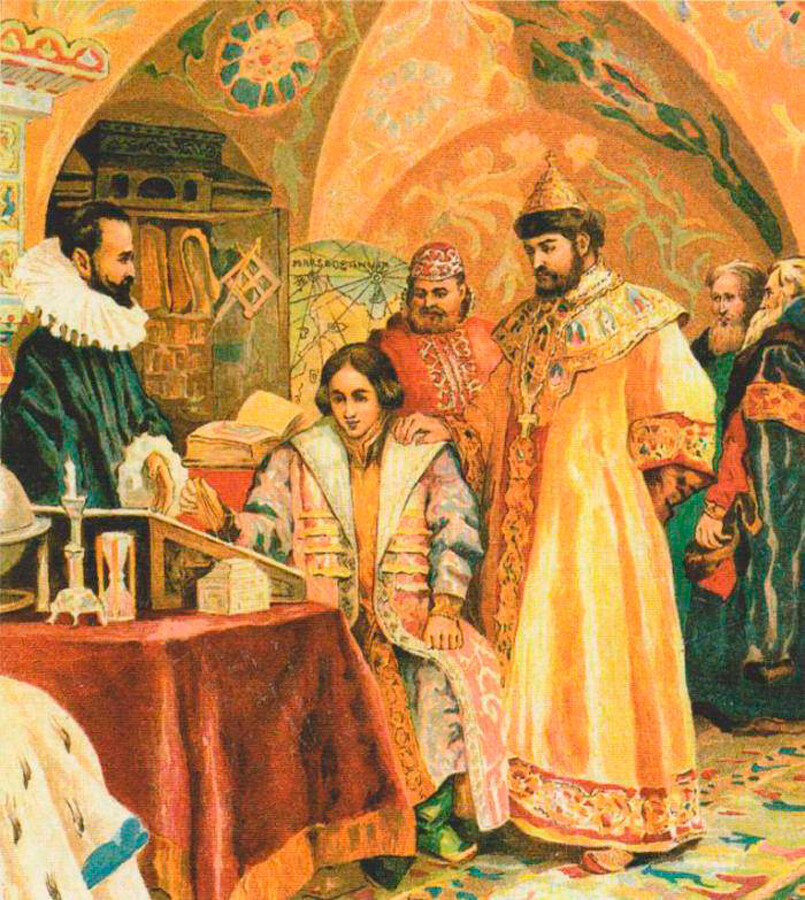
Boris Godunov watches his son Fedor study. A 19th-century picture.
Public DomainIn April 1605, Boris Godunov suddenly died, right in the middle of a war – False Dmitry I, aided by the Poles, was aiming to take Moscow. During the Time of Troubles, several impostor tsars who claimed to be Dmitry of Uglich, a young son of Ivan IV the Terrible, who died at a young age in 1591, appeared in Russia.
The 16-year-old Fyodor effectively became the tsar, but he wasn’t ready to act like one. He wasn’t yet anointed to tsardom, when, in June 1605, he was arrested in the Kremlin – while False Dmitry I was pronounced the “true” tsar. Probably the same day, Fyodor Godunov was killed in Moscow along with his mother, Maria Godunova.

Marina Mniszech and her son Ivan as depicted by Leon Jan Vychulkovsky, a 19th-century Polish artist
Public DomainIn 1608, another impostor tsar, False Dmitry II, publicly married Polish noblewoman Marina Mniszech, who was the wife of False Dmitry I, the previous impostor tsar. Although False Dmitry I was evidently murdered and his body on display in Red Square, Marina “recognized” her “miraculously saved” husband. They all just wanted to pass as the Moscow rulers very much.
However, False Dmitry II was murdered in 1610, leaving Marina pregnant. She gave birth to Ivan Dmitrievich days after False Dmitry II’s death. Conrad Bussow, a German in Russian service, wrote that the Russian nobles “promised to raise [the boy] in secret, so that he would not be killed by the persecutors. And if God grants him life, he would become a sovereign in Russia in the future. She was kept and honored in a royal way at that time.”
In 1613, when Ivan was barely three years old, Marina, who was living with the baby in Kolomna, announced that her son had the rights to the throne. After the Romanovs took the throne, Marina and her son were declared criminals and tried to flee to Astrakhan, but were captured. Marina was thrown into prison, while little Ivan Dmitrievich, who barely understood what was going on, was publicly hanged in Moscow. There is a legend that Marina Mniszech actually cursed the Romanovs, because of the hanging of her son.
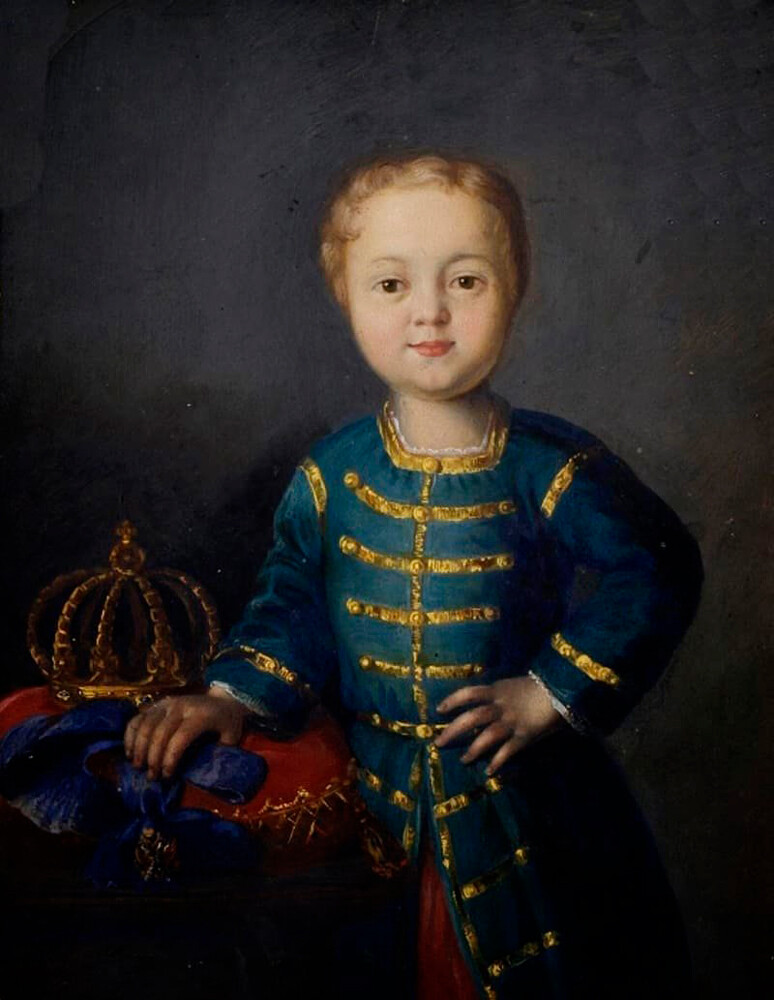
Emperor Ivan VI
Public DomainIvan VI had very vague rights to the Russian throne. He was born a great-grandson to Ivan V, co-ruler with Peter the Great, while Russia was ruled by Anna Ioannovna (1693-1740), Ivan V’s daughter. Anna wanted to keep the throne within the hands of her relatives, so Ivan VI, her niece’s son, was declared the next Emperor in Anna’s will.
Soon after Anna Ioannovna died, her niece and Ivan VI’s mother, Anna Leopoldovna, declared herself the regent of the throne. She was deposed in 1741 by Elizabeth Petrovna, who sent Anna Leopoldovna and all her family, including the son, to exile to Kholmogory village in the Russian North. In 1746, Anna Leopoldovna died there.
In 1756, Ivan was transferred to the maximum security Shlisselburg prison, where he was held in solitary confinement, referred to as “a certain prisoner” and guards were forbidden to speak with him. He knew about his royal origin.
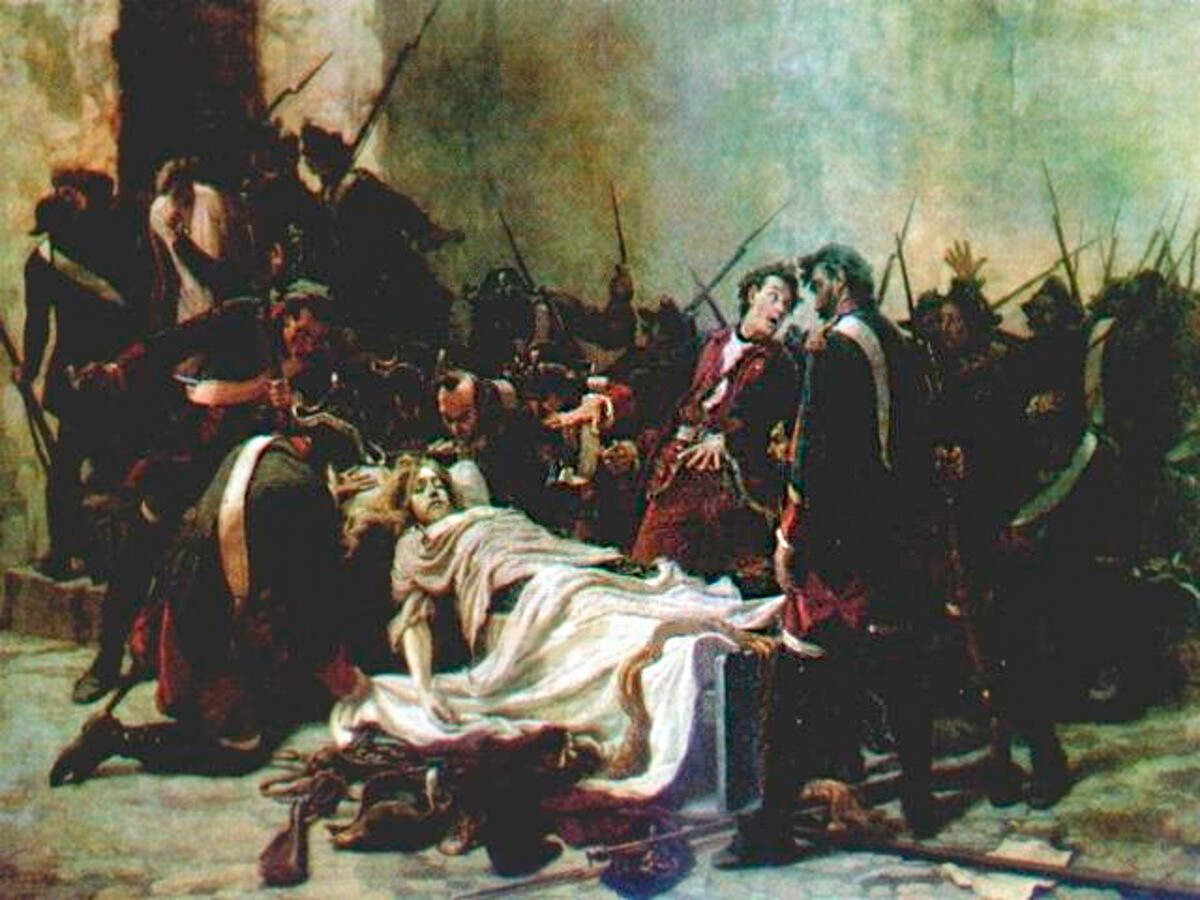
Vasily Mirovich Standing over the Body of Ivan VI at Schlusselburg Fortress. Ivan Tvorozhnikov, 1884
Public DomainIn 1762, Catherine the Great visited Ivan VI in his jail and later ordered to kill the prisoner if he attempted to escape. In 1764, Lt. Vasiliy Mirovich tried to organize Ivan VI’s escape from the prison and Ivan was killed while trying to flee.
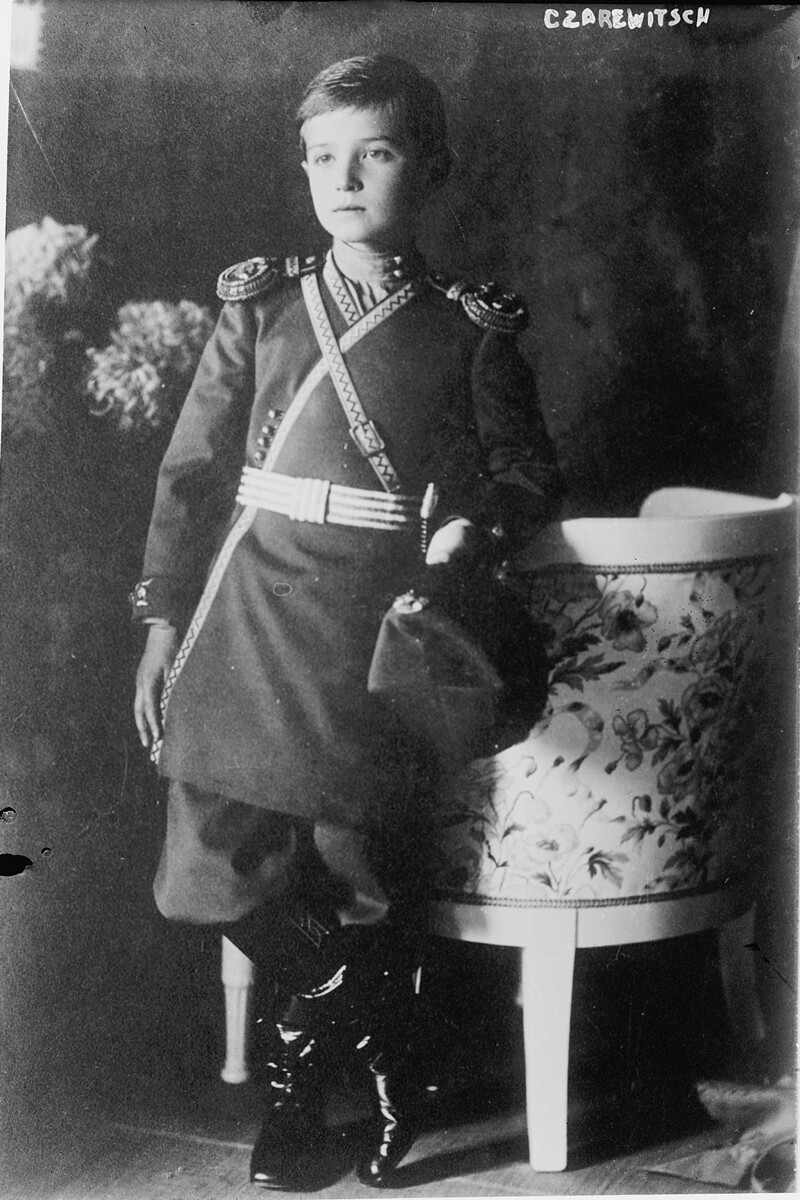
Tsarevich Alexey
Public DomainTsarevich Alexey, son of Nicholas II, was Russian Empire’s last heir, murdered by the Bolsheviks in Yekaterinburg on July 18, 1918.
Since his early childhood, it became apparent that Alexey was ill with hemophilia, a blood disease he inherited from his mother. The heir’s illness made his parents search for help not only among professional doctors, but with charlatans and mediums, as well. However, it appeared that Grigoriy Rasputin, despite his shady reputation, could indeed heal the tsarevich or at least make his bleeding stop.

Tsarevich Alexey, 1915-1916, Mogilev
Public DomainThe illness did not, however, affect Alexey’s character. He grew up a mischievous boy who didn’t like to study and loved the military. As the heir to the throne, Alexey was the Ataman (commander) of all Cossack regiments in the Empire and also was an honorary chief of more than 20 regiments. He loved to spend time with the soldiers. The tsarevich ate porridge and borsch together with the soldiers and was devoid of any arrogance when talking to servants and ordinary people. He also practiced balalaika, an instrument “unbecoming” for royals, which was maybe why the boy liked it so much.
Alexey shared all the hardships of the revolution and subsequent exiles with his father, mother, sisters and closest servants until the very end, their brutal murder. He was canonized along with the rest of the Romanov family as passion bearers by the Russian Orthodox Church in 2000.
If using any of Russia Beyond's content, partly or in full, always provide an active hyperlink to the original material.
Subscribe
to our newsletter!
Get the week's best stories straight to your inbox